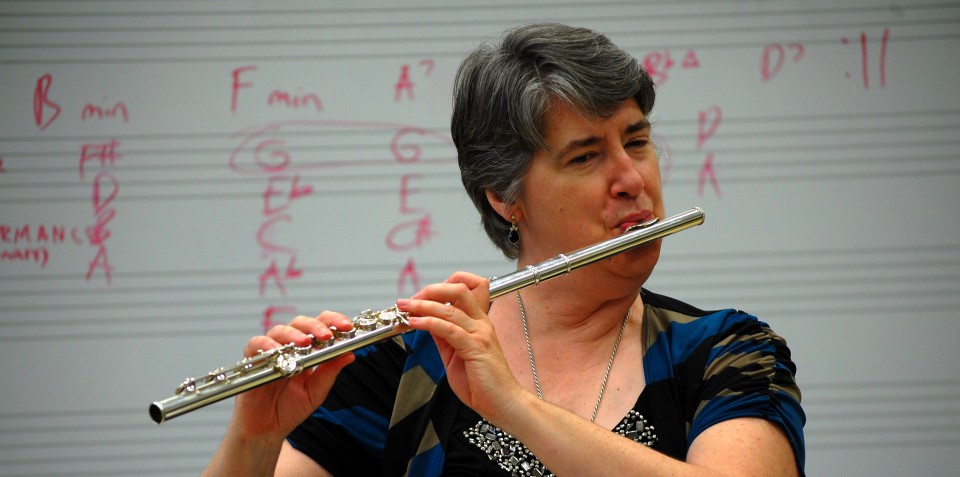The truth is that if your students can learn to correctly place Db (C#), their overall tone will improve exponentially and they will be able to play with better intonation throughout the range of the flute. The obvious question then is how to teach this to your flute students?
Start with making sure your students have a good physical set up with the flute:
- Make sure the flute is properly lined up, with the headjoint turned so the blow hole is aligned between the keys and the rods (not with the keys or even the outside edge of the keys. https://drcatesflutetips.wordpress.com/2014/11/30/its-all-about-balance/
- Ensure that the student knows the balance points for the flute in their hands, i.e. right little finger, right thumb, between the bottom two joints of the left index finger, chin – in line with or just slightly below the bottom lip. https://drcatesflutetips.wordpress.com/2017/05/14/you-wouldnt-think-it-makes-much-difference-but/
- The left hand and wrist should be under the flute, supporting the instrument and the right hand should be behind the flute, with the thumb under and slightly behind the flute, supporting it (right knuckles should never be in contact with the rods). https://drcatesflutetips.wordpress.com/2016/01/17/flute-balance-and-the-left-hand/ https://drcatesflutetips.wordpress.com/2015/10/11/flute-balance-and-the-right-hand/
- The vertical plane through flute should be at about a 45 degree angle to the vertical plane through the body. The intersection of the two planes should be around the left shoulder. The student should be able to see the footjoint end of the flute in their peripheral vision. Another way to say this is that the end of the flute should be aligned in front of your nose rather than back by your ear. You have to extend your right arm out from the shoulder to accomplish this.

Next, have your flute students finger the lowest C and play the harmonic one octave higher. The harmonic is at correct pitch. Now match the pitch of the normal fingering to the pitch of the harmonic. Do the same with the Db/C#. First play the first harmonic of the low Db/C# and compare the pitch to the open/standard fingering for Db/C# on the staff. You will notice that the pitch of the normal fingering will be quite a bit higher than the harmonic. The tone will likely sound thinner and more airy. The way to get the pitch between the harmonic and normal fingering to match is reach out with the top lip and direct the air down more into the blow hole. Keep the blowing aperture small. Practice going back and forth between the harmonic and regular fingering slowly and learn to adjust the blowing angle until the harmonic and regular fingering are at the same pitch. You should notice that the tone will develop more body and be more focused.
A word about older scale flutes (read older mainline American band instrument brands). The scale (placement of the tone holes) is calibrated lower than A = 440-442 Hz. The headjoints were shortened to make the A in tune at 440 or 442. Consequently, the low register is flat and the third octave is sharp. The exercise above is helpful on any flute, however, there are some old tricks that you will want to try to see if you can improve the pitch even further on these old scale flutes. 1) Pull the footjoint out a couple of millimeters. 2) Add right hand fingers to flatten the C and Db/C#. You can do one, two or three, starting with the D key, so it would be D, E and F, in that order. Just see what works. Neither of these tricks should be necessary on modern scale flutes.
As always, if you find these entries useful, please subscribe, share with your colleagues and come back regularly. Feel free to comment. If you have a topic you would like to see explored more fully, you can contact me via IM/Messenger on Facebook or email me at dr_cate@sbcglobal.net. For information about clinics, workshops and performances, click here.

Pingback: Favorite blog posts, September 2019 | Bret Pimentel, woodwinds